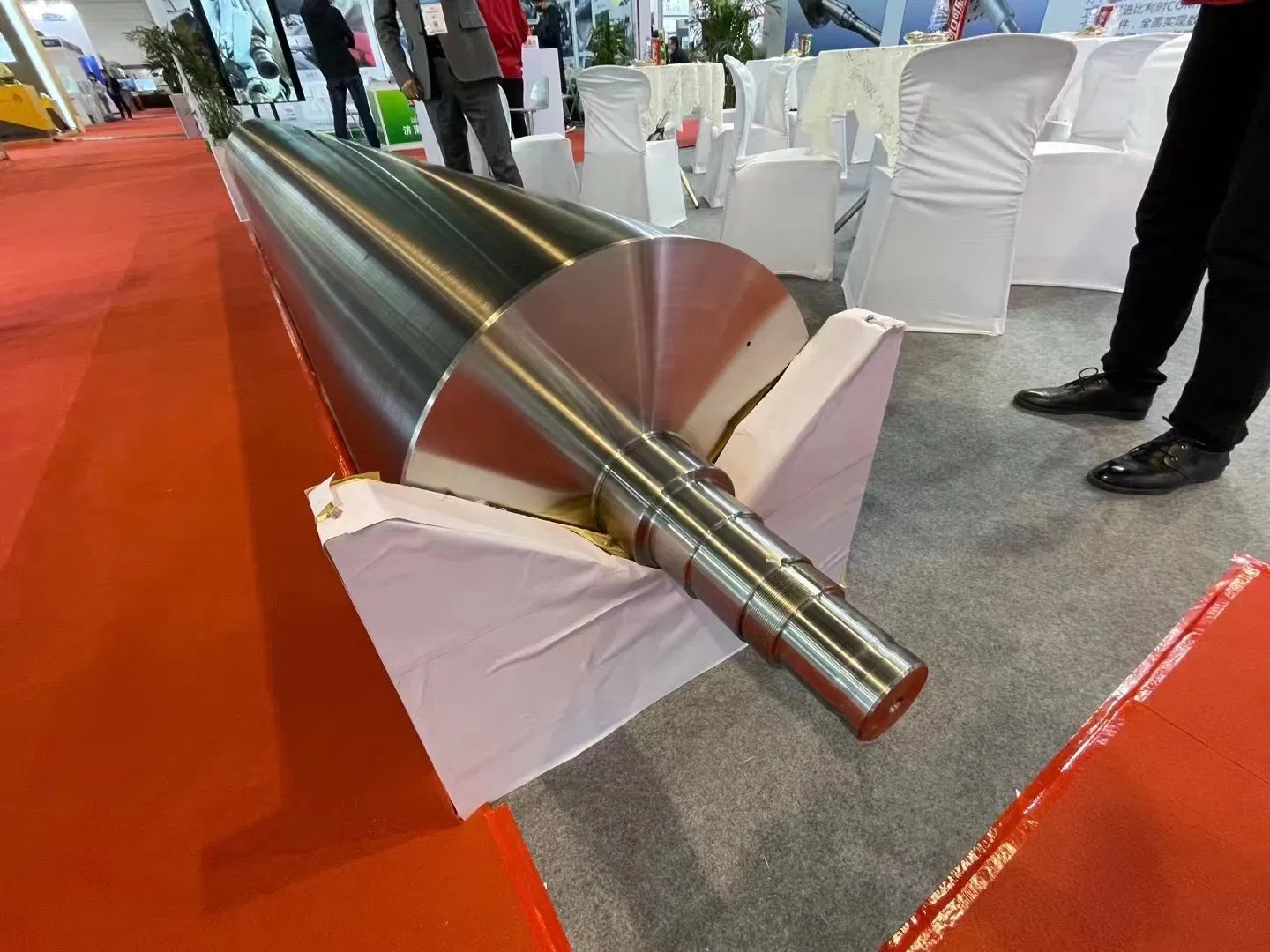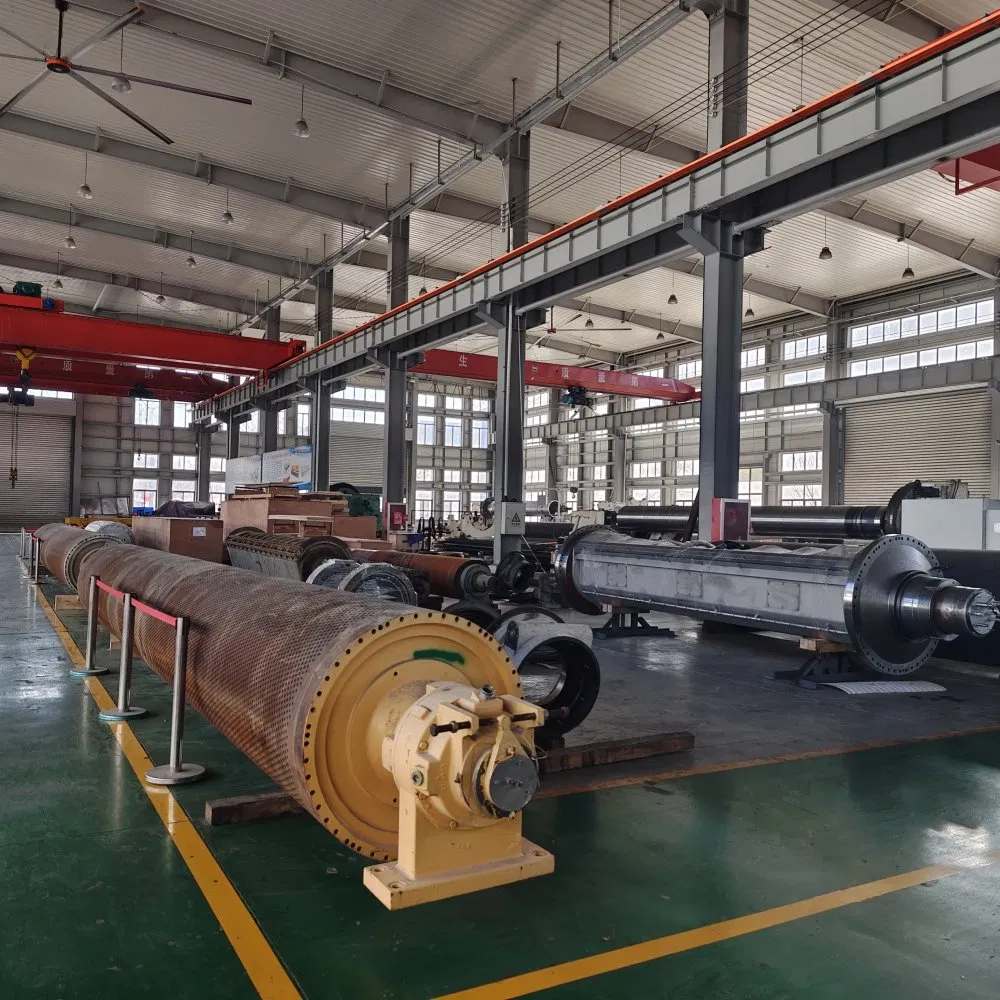Beyond the Purchase Price: Deconstructing the True Cost of Ownership for Paper Machine Rolls
Understanding the true cost of ownership is the foundational step in developing an effective ROI blueprint for paper machine rolls. It’s a comprehensive analysis that reveals the full financial impact of an asset, from acquisition to disposal. For industrial manufacturers, especially those operating complex paper machines, this means looking beyond the sticker price and delving into a multitude of direct and indirect costs. Initial acquisition cost is, of course, the most obvious component. This includes the price of the roll itself, shipping, and any associated taxes or duties. However, this is merely the tip of the iceberg. Installation and commissioning costs are often underestimated. This involves the labor, specialized equipment, and potentially production downtime required to integrate the new roll into your existing machinery. A complex or poorly designed roll might demand more extensive, and thus more expensive, installation procedures. Operating costs are a continuous drain, yet they are frequently overlooked in initial procurement decisions. For paper machine rolls, this includes energy consumption (e.g., power required to drive or cool the roll), lubrication, and routine operational adjustments. High-performance rolls, interestingly enough, are often engineered for lower friction and optimized energy transfer, leading to substantial savings over time. Downtime costs are arguably the most significant, and often most painful, aspect of TCO. When a roll fails, requires frequent maintenance, or needs to be replaced, production halts. This means lost output, idle labor, missed deadlines, and potentially penalties. The cost of a single hour of unplanned downtime in a large paper mill can easily run into tens of thousands of dollars. Scrap material generated due to poor roll performance or frequent adjustments also falls under this costly umbrella. Maintenance and repair costs encompass everything from routine inspections and preventative maintenance to emergency repairs and component replacements. This includes the cost of spare parts, specialized tools, and the labor of skilled technicians. Rolls that are not robust or precisely engineered will inevitably demand more frequent and costly interventions. Finally, end-of-life costs, while distant, are still part of the TCO. This includes the expense of safely disposing of worn-out rolls, which can be significant depending on their materials, and the cost of procuring and installing their replacements. By meticulously accounting for these factors, industrial manufacturers can gain a far more accurate picture of the real financial burden, or indeed, the real financial opportunity, presented by their paper machine rolls. It’s a shift from a transactional mindset to a strategic, lifecycle-oriented perspective.
The Performance Imperative: How High-Performance Rolls Drive ROI in Paper Production
The concept of "high-performance" in paper machine rolls isn't just marketing jargon; it's a tangible set of engineering attributes that directly translate into operational superiority and, crucially, enhanced ROI. These rolls are designed not just to function, but to excel under the rigorous conditions of paper production, delivering consistent quality, extended service life, and optimized energy consumption. What defines a high-performance roll? It typically involves superior materials, advanced surface coatings, precision machining, and innovative internal designs. These attributes contribute to: * Exceptional Durability and Wear Resistance: High-performance rolls are built to withstand extreme temperatures, pressures, and chemical exposure. Their robust construction and specialized coatings resist wear, corrosion, and damage, significantly extending their operational lifespan. This directly reduces replacement frequency and associated downtime. * Optimized Surface Quality and Consistency: The surface finish of a paper machine roll is paramount for product quality. High-performance rolls maintain their precise surface characteristics over longer periods, ensuring uniform sheet formation, consistent moisture profiles, and superior paper quality. This minimizes defects, reduces scrap rates, and enhances customer satisfaction. * Reduced Friction and Energy Efficiency: Many high-performance rolls incorporate designs that minimize friction, whether internal bearing friction or friction with the paper web. This translates directly into lower energy consumption for the machine, leading to measurable savings on electricity bills, which, in my experience, can be a substantial operational cost. * Improved Runnability and Stability: Precision-balanced and dynamically stable rolls reduce vibrations and oscillations within the paper machine. This leads to smoother operation, fewer web breaks, and higher machine speeds, all contributing to increased throughput and overall productivity. * Enhanced Maintenance Predictability: Due to their superior design and construction, high-performance rolls often exhibit more predictable wear patterns, allowing for more effective predictive maintenance strategies. This reduces the likelihood of sudden, catastrophic failures and enables planned, rather than reactive, maintenance. When you invest in high-performance rolls, you're not just buying a component; you're acquiring a solution that actively mitigates the hidden costs of ownership and amplifies operational gains. The initial investment might be higher, but the compounding benefits in terms of reduced downtime, lower energy consumption, improved product quality, and extended service life quickly generate a compelling ROI. It's worth noting that many experts agree that the total cost of ownership for a high-performance roll can be significantly lower than that of a standard roll over its operational life, despite the upfront price difference.Crafting the ROI Blueprint: A Strategic Approach for Industrial Manufacturers
Developing an effective ROI blueprint for paper machine rolls requires a systematic, data-driven approach. It’s about moving beyond reactive purchasing and embracing a proactive strategy that aligns your equipment investments with your long-term profitability goals. For industrial manufacturers, this blueprint provides a clear path to maximizing the value derived from every roll.Step 1: Comprehensive Data Collection and Baseline Analysis
The foundation of any robust ROI blueprint is accurate data. Begin by meticulously collecting information on your current paper machine roll performance and associated costs. This includes: * Maintenance Logs: Track frequency of repairs, roll changes, and the associated labor and parts costs. * Production Records: Monitor uptime, downtime events (planned vs. unplanned), web breaks, and scrap rates. * Energy Consumption Data: Analyze energy usage specifically tied to the paper machine section where rolls operate. * Quality Control Reports: Identify any quality issues directly attributable to roll performance (e.g., uneven profiles, surface defects). By establishing a clear baseline, you can identify critical pain points and quantify the current "hidden" costs of your existing rolls. This baseline will later serve as a crucial benchmark against which the performance of high-performance rolls can be measured.Step 2: Strategic Vendor Selection and Partnership
Choosing the right supplier is as important as choosing the right roll. Look beyond mere price quotes. A true partner will offer: * Technical Expertise: Can they analyze your specific operational challenges and recommend tailored solutions? * Customization Capabilities: Can they design rolls optimized for your unique paper grades and machine specifications? * After-Sales Support: Do they provide comprehensive installation support, training, and ongoing technical assistance? * Commitment to Innovation: Are they continually investing in R&D to deliver even higher-performance solutions? Many experts agree that a long-term partnership with a reputable manufacturer of high-performance rolls can yield far greater returns than a series of transactional purchases from various suppliers.Step 3: Lifecycle Costing and Predictive Modeling
With your baseline data and potential high-performance roll specifications in hand, you can now engage in detailed lifecycle costing. This involves: * Projecting TCO: Compare the projected TCO of a high-performance roll against your current rolls, factoring in all cost components (acquisition, installation, operation, maintenance, downtime, disposal). * Calculating ROI: Use financial models to project the return on investment. This includes quantifying savings from reduced energy consumption, decreased downtime, lower maintenance costs, and increased throughput/quality. * Sensitivity Analysis: Explore how variations in key assumptions (e.g., energy prices, production volume) might impact your ROI projections. Can you afford *not* to invest in rolls that promise superior long-term value? Predictive modeling helps answer this question with hard numbers, making a compelling case for strategic investment.Step 4: Implementation, Monitoring, and Continuous Improvement
Once the decision is made, a phased implementation is often advisable. Install high-performance rolls in a critical section of your machine first, closely monitoring their performance against your established KPIs. Key Performance Indicators for paper machine rolls might include: * Mean Time Between Failures (MTBF): How long does the roll operate without issue? * Energy Consumption per Ton of Paper: Has efficiency improved? * Roll Change Frequency: Are replacements less frequent? * Scrap Rate: Has product quality improved, leading to less waste? * Overall Equipment Effectiveness (OEE): A holistic measure of availability, performance, and quality. Regular monitoring allows for adjustments and ensures that the projected ROI is being realized. This continuous feedback loop is vital for refining your blueprint and optimizing future investments.
Realizing Tangible Returns: Quantifying the ROI of High-Performance Paper Machine Rolls
The theoretical benefits of high-performance paper machine rolls translate into very real, quantifiable returns for industrial manufacturers. By meticulously applying the ROI blueprint, companies can expect to see improvements across multiple operational and financial metrics.Reduced Downtime and Increased Throughput
One of the most immediate and impactful benefits is the significant reduction in unplanned downtime. High-performance rolls, with their superior durability and reliability, break down less frequently and require fewer unscheduled interventions. This means more operational hours for your paper machine. For example, a 5% reduction in unplanned downtime can translate into thousands of additional tons of paper produced annually, directly boosting revenue. Furthermore, their stable operation often allows for higher machine speeds, further increasing throughput.Energy Efficiency Gains
As mentioned, the advanced design and materials of high-performance rolls often lead to reduced friction and optimized energy transfer. This directly lowers the power consumption of the paper machine. While individual energy savings per roll might seem small, when scaled across multiple rolls and thousands of operating hours, the cumulative savings on electricity bills can be substantial, contributing directly to profit margins.Improved Product Quality and Reduced Waste
The consistent surface quality and precise engineering of high-performance rolls ensure a more uniform paper web. This leads to fewer defects, less off-spec product, and a significant reduction in scrap material. For a large paper mill, even a 1% reduction in scrap can result in millions of dollars in material savings annually. Higher quality output also enhances customer satisfaction and strengthens market position.Extended Service Life and Lower Maintenance Burden
High-performance rolls are built to last. Their extended service life means less frequent replacement, reducing both the direct cost of new rolls and the indirect costs associated with their installation and commissioning. Moreover, their robust construction often means less frequent and less intensive maintenance, lowering labor costs and the need for expensive spare parts. This predictability in maintenance also allows for better resource planning.Enhanced Safety and Environmental Compliance
While not always directly factored into ROI calculations, improved operational stability from high-performance rolls can lead to a safer working environment by reducing the need for emergency repairs and manual interventions in hazardous areas. Interestingly enough, their energy efficiency and reduction in waste also contribute to a smaller environmental footprint, aligning with growing sustainability goals and potentially leading to regulatory compliance benefits. The collective impact of these improvements paints a clear picture: investing in high-performance paper machine rolls, guided by a comprehensive ROI blueprint, is not merely an expenditure but a strategic decision that yields substantial and sustainable financial returns, enhancing an industrial manufacturer's competitiveness and long-term viability.For more detailed information, please visit our official website:True Cost of Ownership
About the author: The author is a seasoned expert in industrial manufacturing and operational efficiency, specializing in the paper and pulp industry. With over two decades of experience in optimizing production lines and implementing advanced equipment solutions, they possess a deep understanding of lifecycle costing and ROI analysis for critical machinery components like paper machine rolls. Their insights help manufacturers transform capital expenditures into strategic investments that drive sustainable profitability.


